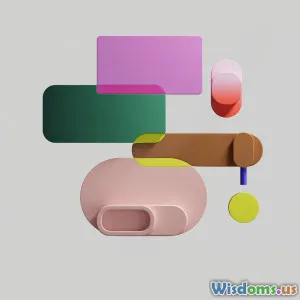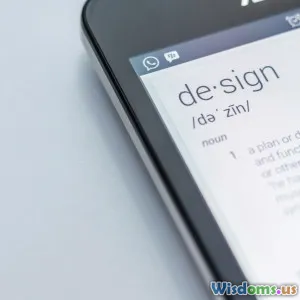
AI Tools for Modern Designers
5 min read Explore innovative AI tools that are transforming the graphic design landscape and enhancing creativity for modern designers. (0 Reviews)
AI Tools for Modern Designers
In the rapidly evolving world of graphic design, technology plays a pivotal role in shaping how designers create and communicate their ideas. Among the most transformative technologies are Artificial Intelligence (AI) tools, which are becoming essential for modern designers. These tools not only boost creativity but also facilitate efficient workflows, enabling designers to focus on what they do best – creating impactful designs.
The Rise of AI in Graphic Design
AI has gained significant traction in various industries, and graphic design is no exception. From automating repetitive tasks to providing intelligent suggestions, AI tools are changing the way designers approach their work. The infusion of AI into design workflows allows for more time spent on conceptualization and creativity rather than mundane tasks.
1. Enhanced Creativity with AI-Powered Tools
AI tools can serve as creative partners, offering designers new perspectives and ideas. For instance, tools like Adobe Sensei leverage machine learning to analyze design patterns and suggest variations, helping designers explore different creative avenues. These tools can analyze vast amounts of design data, enabling them to generate unique logos, color palettes, and layouts based on current trends.
2. Streamlined Workflows
One of the most significant advantages of AI tools is their ability to streamline workflows. Applications such as Canva and Figma utilize AI to automate tasks like resizing images, enhancing visuals, and even generating design templates. This allows designers to focus more on the creative aspects of their projects rather than getting bogged down with technicalities.
3. AI for Personalization
Personalization is a crucial aspect of modern design, especially in marketing. Tools like Looka and Tailor Brands help designers create tailor-made branding solutions by analyzing user preferences and trends. These AI-driven platforms generate brand assets based on specific inputs, ensuring that the designs resonate with target audiences.
4. Intelligent Image Editing
AI has revolutionized image editing through tools like Remove.bg and Luminar AI. Remove.bg uses AI algorithms to automatically remove backgrounds from images, saving designers countless hours of manual editing. Similarly, Luminar AI offers features like sky replacement and portrait enhancement, allowing designers to create stunning visuals with minimal effort.
5. Data-Driven Design Decisions
AI tools can analyze user engagement data to help designers make informed decisions. Platforms like Google Analytics and Hotjar provide insights into how users interact with designs, enabling designers to refine their work based on real feedback. This data-driven approach not only enhances creativity but also ensures designs meet user needs effectively.
6. Collaboration and Feedback
AI tools also facilitate collaboration among design teams. Tools like InVision and Miro incorporate AI features that enable real-time feedback and brainstorming sessions. Designers can share their work with clients and stakeholders, gather feedback, and make adjustments seamlessly, thus enhancing the collaborative process.
Challenges and Considerations
While AI tools offer numerous benefits, designers should be mindful of a few challenges. Over-reliance on AI can stifle creativity, leading to a homogenization of design styles. Therefore, it's essential for designers to strike a balance between leveraging AI tools and maintaining their unique creative voice. Furthermore, understanding the limitations of AI is crucial; these tools are meant to assist, not replace, human creativity.
Conclusion
AI tools are not just a passing trend in graphic design; they are reshaping the creative landscape, enhancing workflows, and empowering designers to push the boundaries of their creativity. As technology continues to evolve, staying informed about emerging AI tools will be essential for designers looking to thrive in a competitive industry. By embracing these tools, modern designers can focus more on the art of design while allowing AI to handle the technical complexities, ultimately leading to more innovative and engaging visual solutions.
Rate the Post
User Reviews
Popular Posts





















